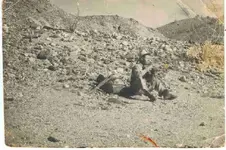TheNewCatfish,
Well, moss isn't supposed to be found on the south side of the tree - its the north side. Actually - its the shaded side - which stays damper longer, and is more apt to grow fungus and moss.
And, I agree with you 100%. Survivorman is bad, but BEAR GRYLSS is horrible! That man is really going to get himself and other people killed.
If he hasn't already. Of course, the dead tell no tales, so, we can only guess if someone on a trip died trying some of the garbage that he does.
I hate it when I hear someone say "oh, I only go with XXX bottles of water, because I know where to find it". Especially in the desert. I have learned - unfortunately, the hard way, because that is apparently the only way I remember things well, that you cannot, should not - and I won't,
bank my life on the fact that there is water someplace, just because it has been there the last 5 years that I was there, even through dry years. I have been lucky enough to have a dog who could find water like a mule, or else, I would not be writing this. I now have - and know of - several water caches in several places in several deserts. And then, I still don't count on them. Luckily, I have friends who cache food and supplies, too, and they know where ours are (most of them), and I know where most of their's are. They are welcome to use what they need - and vice-versa, and I STILL don't depend on it.
Also, something that yanks my tail, is folks who say "oh, I only need 1 quart of water a day" or whatever - well, I've been in the medical field for a long, long time - and, those folks, even if they survive for 20 years out in the desert doing that? They end up needing a kidney down the line. That's the problem with water - you can die and never have felt thirsty. Just because you feel fine, doesn't mean that toxins are not building up in your system, just getting ready to knock you down when you least expect it - like when you sit down for a break or a look-see.
Awareness is number one. Are you sweating? You're losing water. Are you NOT sweating? Your body could be compromised. Have you peed? What color was it? If its darker than usually - get some fluid. And you don't just lose water - there is a reason athletes use things like gatorade. You lose water, salt, potassium and necessary sugars when you sweat. Potassium is the number one salt for your heart to beat. Sugar - is a necessary fuel - and regular salts are the helpers - if you stop sweating, your body builds up toxins, like uric acid, and eventually, can poison you. There can even be a problem if your urine has no color - or you have lots of very light, light colored urine - your kidney's aren't filtering anymore.
You have got to be aware of all your bodily functions - and, if you are with a partner, make sure THEY are paying attention. It is really tough to have to get someone who is half delirious to a shady spot and get electrolytes into their system. Did it once - weighed 35 or 40 pounds more than me, had no friggin clue what he was doing or saying. Scared the bigabbers out of me. I don't carry gatorade, but I do carry water, a sugar and salt. (and by the way, salt also helps your body to use the fluid you are giving it, by acting like a wick).
Sorry for the rant - I've spent too much time out of MY trips helping others who were either not prepared, or thought they were fine, and weren't, digging dead people out of mines (my personal favorite), and looking for lost people from my own party. (another little thing I love - people who don't realize that nobody walks naturally in a straight line-and that will get you lost in a hurry).
I have personally found that, there are 2 main groups of folks who will have a problem - the weekender - just out for a day-hike, and the person, unfortunately, like me - who have been out hundreds of times, and just has to look "over there" without paying attention to where you came from, or marking your trail. (if you are smart, you won't do that - if you are smarter, you will mark your trail, even if you are just planning on looking right over there. It is amazing how everything can look exactly the same once you have turned around once.
Beth
 http://forum.treasurenet.com/index.php/topic,381928.0.html http://forum.treasurenet.com/index.php/topic,381928.0.html
http://forum.treasurenet.com/index.php/topic,381928.0.html http://forum.treasurenet.com/index.php/topic,381928.0.html









